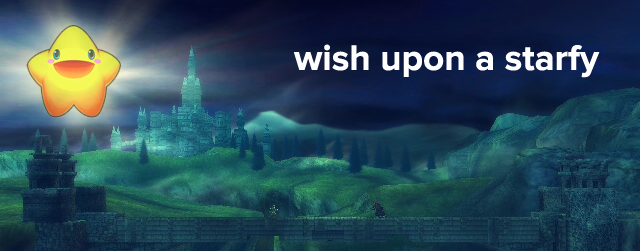
While we’re probably all very well accustomed with the vast majority of Nintendo’s franchises (after all, this is a Nintendo-centric website) there’s one that you might not be so clued up on. The Legendary Starfy series may have recently debuted in the English speaking world (The Legendary Starfy was released for DS in the summer of 2009 in America) but the franchise has a much longer history in Japan, spanning five games across Game Boy Advance and DS.
Having been a fan of the Starfy series for several years now (I’ve imported and played the first four and am a translator myself) I eagerly anticipated the first English iteration for two reasons: one being to see how it stacked up to the first four titles and the other to see how Nintendo of America would handle the localization process. Nintendo’s team, of course, is usually brilliant at doing this, pulling every ounce of character they can muster out of every single string of dialogue (take the Mario & Luigi series and Paper Mario games as two perfect examples of what I mean) and I’m glad to say that they did it with The Legendary Starfy as well.
To be honest, I was more nervous with the Starfy translation than usual because Super Princess Peach, another peculiar game developed by Tose, was surprisingly poor in its adaptation into English. Not only was the game’s glossary a jumbled mess but a cameo from Starfy was blundered by the fact that his name was changed to “Starfish”, stalling any really attempts for the series to develop a presence outside of Japan. While Starfy’s presence in Super Princess Peach may have done him few favours, his appearances in other Nintendo games (including as an Assist Trophy in Super Smash Bros. Brawl) helped lay inroads for his eventual arrival to the US.
While we’re now all on the Starfy bandwagon, how much do you know about his past? Read on to find out what Starfy did before gracing the shores of America (and Australia, but not Europe) in his fifth official outing, all the way back to his surprising start as an unlikely aquatic hero!
Starfy 1 Summary
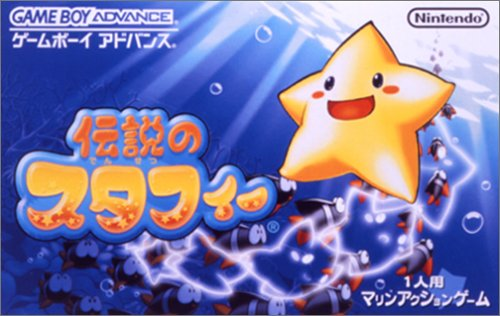
At the start of Starfy’s first adventure, the clumsy star prince dropped one of Pufftop’s royal treasures (a vase, to be precise) off of a nearby cloud, which mysteriously caused a horrendous storm to ensue. The wind it created was so powerful that it forced Starfy to fall from the sky and into the ocean. An elderly lobster quickly found the lost star, learned of his background and proceeded to teach him the basic training he needed to begin his daring quest back to his home in the heavens. Unbeknown to Starfy, and perhaps even the developers, this adventure would only be the first of many.
Starfy soon found himself swimming through various areas, meeting his soon-to-be best friend, Moe the clam, along the way. Together the two of them toppled many a dilemma (including plowing through snow and ice, escaping the belly of a whale, and even searching a sunken ship) across nine unique stages in order to reach their final destination. It would turn out that the vase Starfy had dropped at the beginning of the game held a wicked sea slug named Ogura inside, and, once it hit the ocean floor, it cracked open, thus releasing the evil tyrant back into the world. After a tough battle against this nautical enemy, our heroes would thankfully be able to seal their weakened foe back into another pot.
Following this triumph over darkness, the kingdom rejoiced at Starfy’s return home and held a fantastic celebration. Being rewarders of those deserving merit, the King and Queen then gave six chests from their treasury to Moe for his acts of heroism. Moe would then return to his humble shack in the ocean and buy his three younger siblings the desires of their hearts, which turned out to be his secret ambition for joining Starfy in the first place.
Starfy 2 Summary
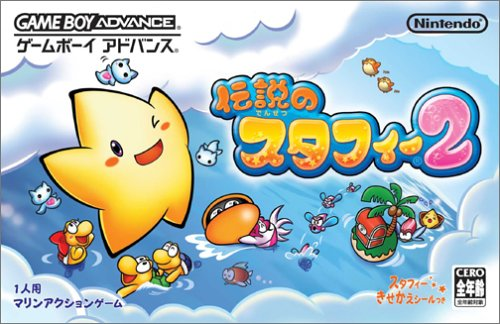
In the first Starfy sequel, some years have passed and Starfy and company are enjoying a time of peace. Ogura is still very much alive inside his vase and now plotting revenge, which must of course be preceded by an escape from his ceramic prison. Realizing he is an asexual sea slug, he proceeds to spawn ten children (the “Mini-Meanies”) who are each small enough to fit through the lid of the vase. Once they are outside, they create a tumult that tumbles the vase over and shatters it. The freed Ogura then taunts the denizens of Pufftop by kidnapping Starfy’s mother and daring him to get her back. Starfy and Moe soon wind up back together in the ocean and begin a brand-new adventure with more at stake now than ever before.
Down below, a similar plot to the first game unfolds. Only this time, there are eleven new stages to traverse and Ogura’s ten children to defeat in battle. In the end, however, Ogura (who had taken on a much deadlier form) along with his seedling spawn, are trapped once again within the confines of yet another vase. Moe is also again rewarded by the kingdom for his bravery but watches silently off in the distance as the Starfy family celebrates another amazing victory and the reunification of mother and child.
He does so because, as shown in the ending credits, Moe grew up in a dysfunctional home. His father had begun to live a prodigal life early in the marriage, which caused Moe’s mother to gradually grow discontent. She eventually took her four children away from their father for their safety and moved into another home. The little clam family lived merrily on for a little while, when all of a sudden, the weight of the world bore heavy on the single mother’s shoulders, and she grew ill and passed away. After her death, Moe, as the eldest, swore that he would take care of his younger brothers and sister henceforth. Needless to say, the plot dealt with some surprisingly deep elements.
- E. Vile
The silhouette originally known as Master E later breaks from his host to reveal this batty demon - his true incarnation.
- Jezebeel
This serpentine queen is the pug ugly villain of Starfy 4.
- Moe the Clam
Starfy's big-hearted, smack-talkin' first mate.
- Ogura
The principal villain of games 1 and 2. He is similar to Bowser in many respects.
Starfy 3 Summary
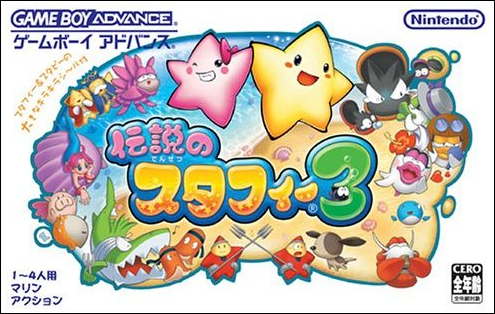
The third game in the series introduced a second playable character in the form of Starly, Starfy’s sassy sister who was born shortly after the last game. Now, several years later, another story begins after a colossal new villain known only as “Master E” releases Ogura from his vase and promptly forces him to act as his servant.
This game really upped the ante as far as quality GameBoy Advance games go, let me tell you, and even includes the infamous Wario cameo that I’m sure many diehard Nintendo fans have read about. Once you defeat Ogura and reach the ending you get a complete revamp and must play through the game a second time in order to collect the forty two Vilecrysts (glittery stone thingamajigs) that are spread across the world. These jewels grant Starfy the access to seriously duke it out with E. Vile – the true name of the demonic bat creature who had been manipulating Ogura the whole time.
Moe’s dad, who was mentioned in the previous adventure, is crucial to the plot this time around. He not only enters the story but repents of his wrongdoings and ultimately sacrificing himself to save his son from certain death. This valiant, uncompromising deed kindles a passion previously unknown to Moe for his formerly incompetent father.
However, in the real ending to the game (after all Vilecrysts are finally obtained and E. Vile is bruised and battered by the star siblings) it is not until the dying Ogura appears on the scene and adds one more Vilecryst to Starfy’s collection that our heroes have the power to send the malevolent monster to his final resting place, once and for all. In other words, Ogura becomes a good guy right before his death. Yeah, it’s pretty epic.
 During the final credits we get a glimpse of Starfy and Starly’s everyday lives and when the last name scrolls by, Moe and his three siblings are shown sitting outside the kingdom with every character who has ever died throughout the series looking down upon them. In this illustration, players are given vivid examples of the true saying– “Greater love has no man than this: that he would lay down his life for a friend.” And for that reason, the third installment gave a landmark ending to the Ogura trilogy.
During the final credits we get a glimpse of Starfy and Starly’s everyday lives and when the last name scrolls by, Moe and his three siblings are shown sitting outside the kingdom with every character who has ever died throughout the series looking down upon them. In this illustration, players are given vivid examples of the true saying– “Greater love has no man than this: that he would lay down his life for a friend.” And for that reason, the third installment gave a landmark ending to the Ogura trilogy.
Starfy 4 Summary
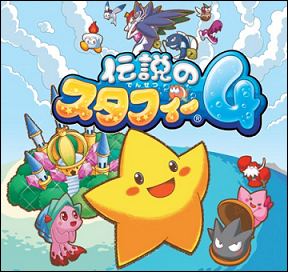
In Starfy’s DS debut, love of a more amorous nature is the central theme. It starts out with a fish princess named Matel arriving at Pufftop with a request. Her plea: that the Starfy she has heard so much about would save her kingdom from a rising threat. It turns out that a hideous eel-woman (with an even more nefarious laugh) named Dejeel (I would localize her name to Jezebeel) has stolen her kingdom’s Heartstone– a valuable piece of jewelry that helped maintain peace and prosperity among Matel’s people.
Using the power of it, Jezebeel causes chaos upon the sea below, desiring as her only armistice that she be wed to the most handsome fish in the sea, Prince Coral. The only problem is she’s hideously ugly, not to mention mean. So she initiates a plan to use the Heartstone to make herself gorgeous, believing that outward appearances alone are the solitary keys necessary to unlocking the doors of affection in a man’s heart.
Once again the series received a graphical overhaul, and of course an entirely new control scheme on an entirely new stretch of ocean. Jezebeel is not nearly as difficult to defeat as Ogura and E. Vile were, but she’s still a very intriguing character. Just mess up her sordid body, break her rotten teeth and crack off her artificially-enhanced face, and you’re ready to go home!
On the special ending, Princess Matel and Prince Coral are wed, and Starfy, who held furtive feelings for Matel, and Starly, who held blatant feelings for Coral, are both saddened at the fact that a permanent stamp of disapproval has been placed on both their crushes. The final scene of the game shows Jezebeel, now as tiny as a snake, slithering across the screen.
All in all, the Starfy series is great. It’s full of ingenuity, colorful characters, melodic music, witty dialogue– all the makings of success. I really get the feeling that Tose cares deeply about this franchise and with boatloads of things to do after each game is complete, they certainly aren’t walks in the park for perfectionist gamers like myself. Which leads me to my final two paragraphs of compliments and complaints.
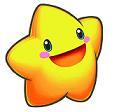 The English translation of the fifth game sadly does have a few flaws, which I’m afraid I must point out. When characters make references to previous games, they are often vague and indiscreet (probably because the NOA team never played the first four games, which renders the terms they use as baseless). Several times the main cast act like they know other characters with lines like “Let’s find Old Man Lobber. He’s helped us before,” but once they find him, they speak as though they don’t know him from Adam. Once a specific character is referred to as male, but at all other times she’s referred to as female. And no, there is none of that stuff going on in this game; it’s just an honest mistake made by the NOA team because the Japanese do not always include precise words like “he” and “she” in their language, which often forces translators to make their own assumptions regarding a character’s gender when they are not clearly one or the other. Also, and this is just nitpicking but the word “search” is spelled wrong once in the multiplayer mini-game area when playing in Local Wireless.
The English translation of the fifth game sadly does have a few flaws, which I’m afraid I must point out. When characters make references to previous games, they are often vague and indiscreet (probably because the NOA team never played the first four games, which renders the terms they use as baseless). Several times the main cast act like they know other characters with lines like “Let’s find Old Man Lobber. He’s helped us before,” but once they find him, they speak as though they don’t know him from Adam. Once a specific character is referred to as male, but at all other times she’s referred to as female. And no, there is none of that stuff going on in this game; it’s just an honest mistake made by the NOA team because the Japanese do not always include precise words like “he” and “she” in their language, which often forces translators to make their own assumptions regarding a character’s gender when they are not clearly one or the other. Also, and this is just nitpicking but the word “search” is spelled wrong once in the multiplayer mini-game area when playing in Local Wireless.
Nonetheless, the most important aspect of a localization to me personally is whether or not the cast is translated with recurrent personality– and in that area, NOA succeeds with flying colors. I’d say any Nintendo fan craving something new should buy The Legendary Starfy for Nintendo DS; and not only because it’s a great game in general, but because Tose would be happy to release the first four in English, as well as develop a sixth game, if the western release sells well enough. So what are we waiting for? Let’s make ourselves a franchise!




 ShareThis
ShareThis











Thank you very much for writing this article, Smith. I happily imported Starfy 2 and 3 a few years ago, as well as Starfy 4 back in 2009. Sadly for me, though, I don’t understand a word of Japanese– that why I’m grateful that you posted the stories to all the Starfy games. :)
So far, I’ve completed Starfy 2 and 3. I have to admit that 3 was awfully similar to 2 (but the Wario cameo in 3 was awesome!). Haven’t tackled 4 yet, but I definitely will in the future. And after I’m done that, I have The Legendary Starfy to play (in glorious English).
You know, these Starfy games work really well on handhelds because there’s a save point pretty much every two minutes. I know I enjoyed taking these games everywhere.
Yes, and at about $15 now there’s no reason not to pick up the English release of The Legendary Starfy!
Oh, and thank you for your kind words, Nicolas.
Unless they never released it in your region! *shakes fist at Europe*
I always was hesitant to try these games out. Dunno why, they just seemed like a kirby rip off to me. (that was without even trying em out.) I do like platformers tho, so maybe someday
Nothing about Starfy (besides some character designs) is anything like Kirby, though he is definitely inspired by the pink cream puff. His games are underwater platformers – which is the first of its genre, I believe. It’s funny really, because I’ve always had aquaphobia for underwater areas on games (the water temple on Zelda: OOT, Mario 2-2, etc.) but I don’t have that feeling with Starfy.
yeah, i don’t know why I felt like he was a kirby clone, I’m sure its different. As for aquaphobia in games, Ha thats hilarious. When I was younger I had the same problem just with 3d games tho, 2d never bugged me. I was terrified that something was gonna come and grab mario the entire time I played through mario64’s water level
The other day my brother threw out the name Jezebeel into the air as another excellent name for the villain Dejeel (whom I originally called “Eel Myra.”) I shrugged it off at first, but after thinking about it have decided it’s a much better fit for her and also more like a possible Nintendo localization.
For what it’s worth, “Jezebeel” is also closer to her original Japanese name. Not that that’s a must, but still…
Jezebeel is great! I played one import Starfy game but I know almost no Japanese. Must get the DS one!
Great game. Hopefully there are plans to release the older titles in the US. Maybe a compilation game card or via the eshop.